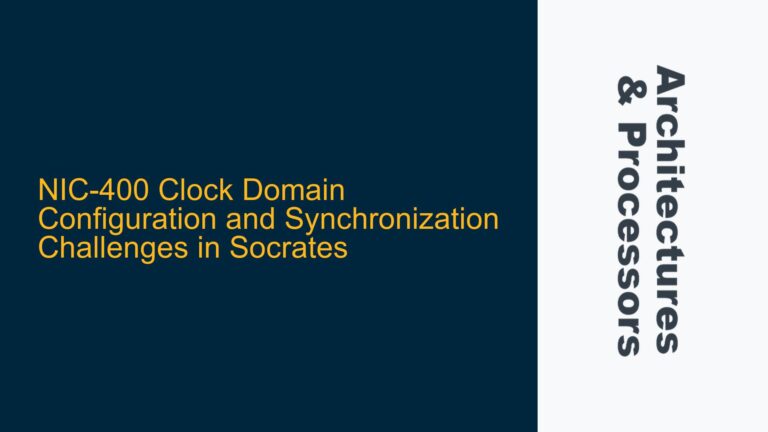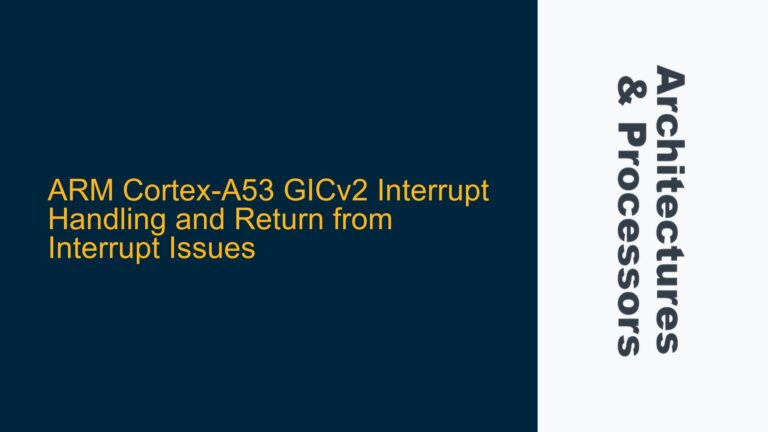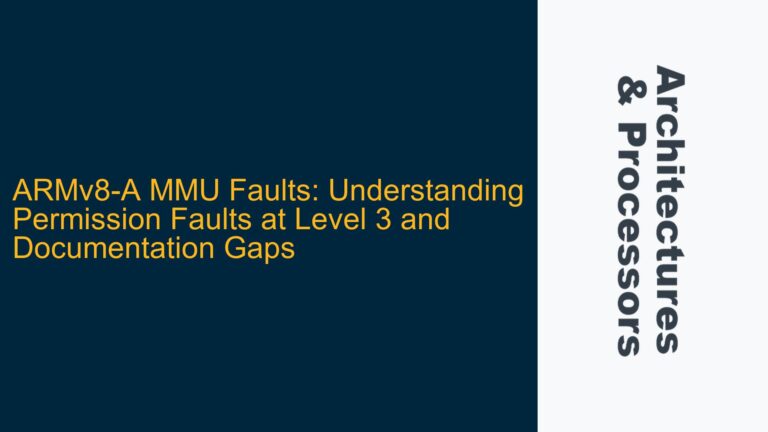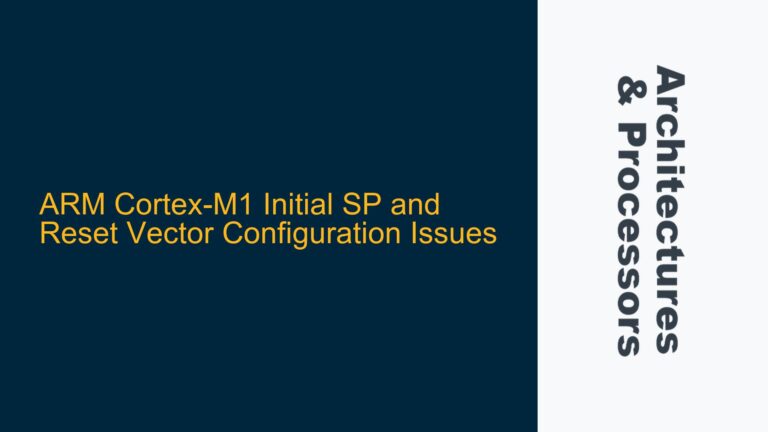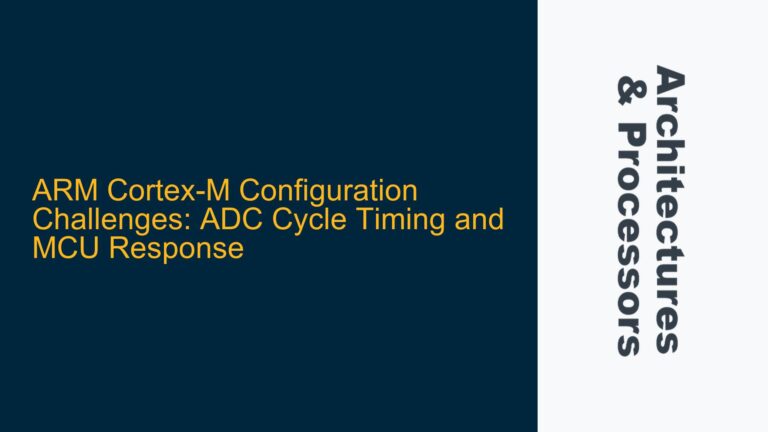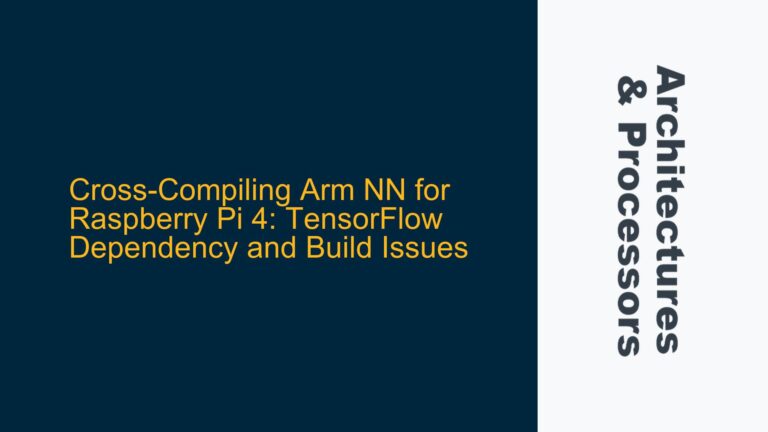Cortex-A17 Cache Flush Latency: Understanding the Performance Bottleneck
The flush_cache_all() function on the Cortex-A17 core, operating at 1.25 GHz with a 32 KB I-cache, 32 KB D-cache, and 256 KB L2 cache, is reported to consume over 200 microseconds. This latency is significant, especially in real-time or performance-critical applications where cache maintenance operations must be efficient. The Cortex-A17, part of ARM’s big.LITTLE architecture, is designed for high-performance tasks, but the observed delay in flush_cache_all() suggests inefficiencies in cache management or improper usage of cache maintenance operations.
The flush_cache_all() function is typically used to ensure cache coherency by flushing all cache lines, including dirty lines, to main memory. This operation is critical in scenarios where the CPU and other bus masters (e.g., DMA controllers) share memory regions. However, flushing the entire cache is inherently expensive because it involves traversing and invalidating all cache lines, regardless of whether they contain modified (dirty) data. On a Cortex-A17, this operation must handle the L1 instruction cache, L1 data cache, and the shared L2 cache, which collectively amount to 320 KB of cache memory. The time taken to flush this entire cache space is influenced by the cache hierarchy, the memory subsystem’s bandwidth, and the efficiency of the cache maintenance instructions.
The Cortex-A17’s cache architecture employs a write-back policy for the L1 and L2 caches, meaning that dirty cache lines must be written back to main memory before they can be invalidated. This write-back process contributes significantly to the latency of flush_cache_all(). Additionally, the Cortex-A17’s cache maintenance operations are implemented using ARMv7-A instructions such as DCISW (Data Cache Invalidate by Set/Way) and DCCSW (Data Cache Clean by Set/Way), which operate on entire cache sets or ways. These instructions are not granular and can lead to unnecessary overhead if applied indiscriminately.
Cache Maintenance Overhead: Dirty Line Flushing and Set/Way Operations
The primary cause of the high latency in flush_cache_all() is the indiscriminate flushing of all cache lines, including clean lines that do not require write-back. The Cortex-A17’s cache maintenance operations are designed to operate on entire cache sets or ways, which can result in redundant work. For example, if only a small portion of the cache contains dirty data, flushing the entire cache is inefficient. The DCISW and DCCSW instructions used in flush_cache_all() do not distinguish between dirty and clean lines, leading to unnecessary write-backs and invalidations.
Another contributing factor is the lack of granularity in cache maintenance operations. The Cortex-A17 does not provide fine-grained control over cache flushing at the level of individual cache lines or specific memory regions. Instead, cache maintenance operations are performed at the level of cache sets or ways, which can result in over-flushing. This lack of granularity is particularly problematic in systems where only a small portion of the cache needs to be flushed, such as when sharing specific memory regions with a DMA controller.
The Cortex-A17’s cache hierarchy also plays a role in the observed latency. The L1 and L2 caches are tightly coupled, and flushing the L1 cache often requires subsequent operations on the L2 cache to maintain coherency. This interdependency increases the overall latency of flush_cache_all(). Additionally, the Cortex-A17’s memory subsystem may introduce further delays if the memory bus is congested or if the memory controller is not optimized for high-frequency cache maintenance operations.
Optimizing Cache Flushing: Selective Cleaning and Data Synchronization Barriers
To address the high latency of flush_cache_all(), developers can adopt several optimization strategies. The first approach is to replace flush_cache_all() with selective cache flushing operations that target only the dirty cache lines. This can be achieved using the DCCIMVAC (Data Cache Clean and Invalidate by MVA to PoC) instruction, which cleans and invalidates a specific memory region rather than the entire cache. By identifying the memory regions that require cache maintenance and applying DCCIMVAC selectively, developers can significantly reduce the overhead of cache flushing.
Another optimization is to use data synchronization barriers (DSBs) to ensure that cache maintenance operations are completed before proceeding to subsequent instructions. The DSB instruction ensures that all cache maintenance operations are globally observed, preventing race conditions and ensuring coherency. However, DSBs should be used judiciously, as they can introduce additional latency if overused. Developers should place DSBs only where necessary, such as after a sequence of cache maintenance operations that affect shared memory regions.
For systems that require frequent cache maintenance, developers can consider partitioning the cache into regions that are managed independently. For example, the Cortex-A17’s L2 cache can be partitioned using the L2CTLR (L2 Control Register) to allocate specific ways for different tasks. By dedicating a portion of the L2 cache to a specific task, developers can reduce the scope of cache maintenance operations and minimize their impact on overall performance.
Finally, developers should review the system’s memory access patterns and optimize them to reduce the frequency of cache maintenance operations. For example, aligning data structures to cache line boundaries and minimizing the use of shared memory regions can reduce the need for cache flushing. Additionally, developers can use prefetching techniques to ensure that data is available in the cache when needed, reducing the likelihood of cache misses and the associated maintenance overhead.
In conclusion, the high latency of flush_cache_all() on the Cortex-A17 is primarily due to the indiscriminate flushing of all cache lines and the lack of granularity in cache maintenance operations. By adopting selective cache flushing, using data synchronization barriers judiciously, partitioning the cache, and optimizing memory access patterns, developers can significantly reduce the overhead of cache maintenance and improve system performance. These optimizations are particularly important in real-time and performance-critical applications where efficient cache management is essential.

